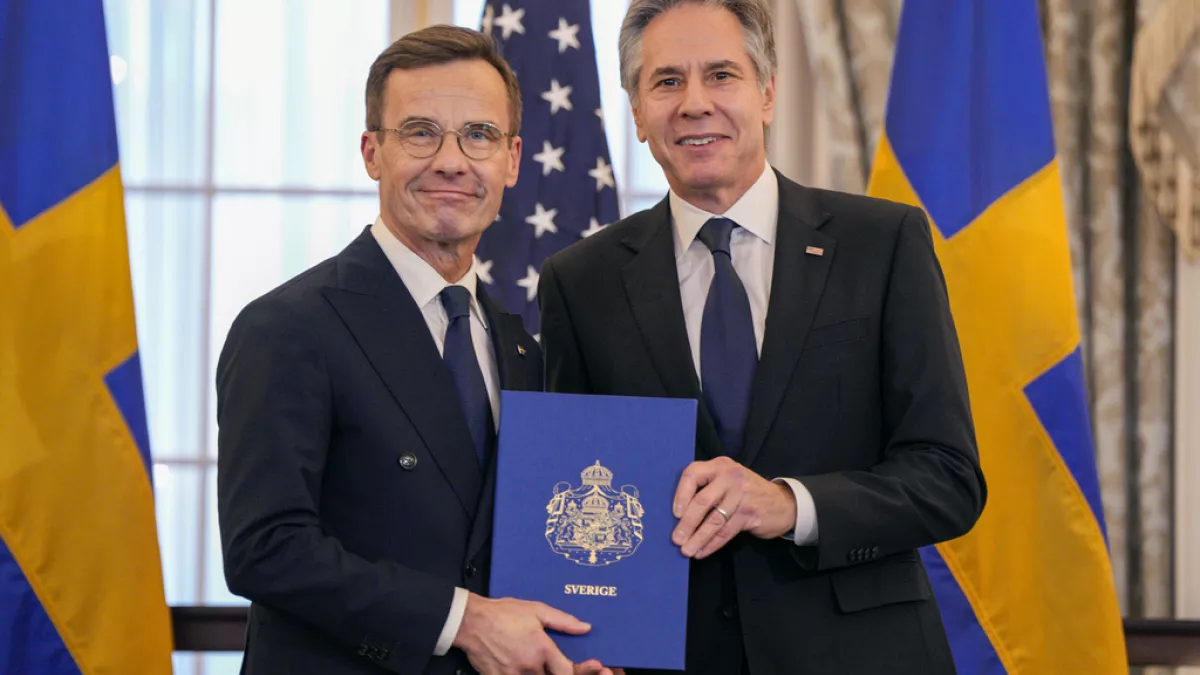Sweden Joins NATO: A New Chapter in Transatlantic Defense
Sweden’s formal entry into NATO as the 32nd member marks a significant milestone in European security dynamics, ending decades of post-World War II neutrality and reshaping the geopolitical landscape amidst rising concerns about Russian aggression in Europe.Sweden’s Prime Minister, Ulf Kristersson, and Secretary of State Antony Blinken presided over the ceremony where Sweden’s “instrument of accession” to NATO was officially deposited at the State Department, emphasizing the historic nature of this moment.
Historical Context and Significance
For over 200 years, Sweden maintained a stance of military neutrality and avoided alliances, but the invasion of Ukraine by Russia in 2022 prompted a reevaluation of its security policy. The decision to join NATO represents a departure from its traditional stance and underscores a new era of security cooperation.
Impact on European Security
Sweden’s accession to NATO not only strengthens the alliance but also enhances Sweden’s security posture by aligning itself with a powerful defensive alliance. This move is seen as a response to the changing security environment in Europe and a strategic shift towards bolstering collective defense capabilities.
NATO’s Response and Future Prospects
NATO Secretary-General Jens Stoltenberg hailed Sweden’s entry as a historic day, emphasizing that Sweden will now have an equal say in shaping NATO policies and decisions. The activation of Article 5, which guarantees allies’ freedom and security, provides Sweden with added security assurances within the alliance.
Geopolitical Implications
Sweden’s membership in NATO sends a clear message to Russia and other potential adversaries about the unity and resolve of Western democracies. It also strengthens NATO’s presence in the Baltic region, enhancing deterrence capabilities and underscoring the alliance’s commitment to collective defense.
In conclusion, Sweden’s official entry into NATO represents a pivotal moment in European security architecture, signaling a strategic realignment towards stronger defense cooperation and solidarity within the transatlantic alliance.
History of NATO and how did it come into existence
The North Atlantic Treaty Organization (NATO) was established in 1949 as a military alliance by the United States, Canada, and several Western European nations to provide collective security against the Soviet Union.
The creation of NATO was part of a broader effort to deter Soviet expansionism, prevent the revival of nationalist militarism in Europe, and encourage European political integration.
In response to these challenges, NATO was formed to counter the threat of Soviet expansion and ensure security in Europe.NATO’s core principle is expressed in Article 5 of the North Atlantic Treaty, where member countries agree that an armed attack against one or more of them in Europe or North America will be considered an attack against all, leading to collective defense measures.
Member states of NATO
NATO currently has 32 member countries. These countries are sovereign states that come together through NATO to discuss political and security issues, making collective decisions. The member countries of NATO include:
- Albania (2009)
- Belgium (1949)
- Bulgaria (2004)
- Canada (1949)
- Croatia (2009)
- Czechia (1999)
- Denmark (1949)
- Estonia (2004)
- Finland (2023)
- France (1949)
- Germany (1955)
- Greece (1952)
- Hungary (1999)
- Iceland (1949)
- Italy (1949)
- Latvia (2004)
- Lithuania (2004)
- Luxembourg (1949)
- Montenegro (2017)
- Netherlands (1949)
- North Macedonia (2020)
- Norway (1949)
- Poland (1999)
- Portugal (1949)
- Romania (2004)
- Slovakia (2004)
- Slovenia (2004)
- Spain (1982)
- Turkey (1952)
- United Kingdom (1949)
- United States (1949)
Sweden is became the 32nd member of NATO.





